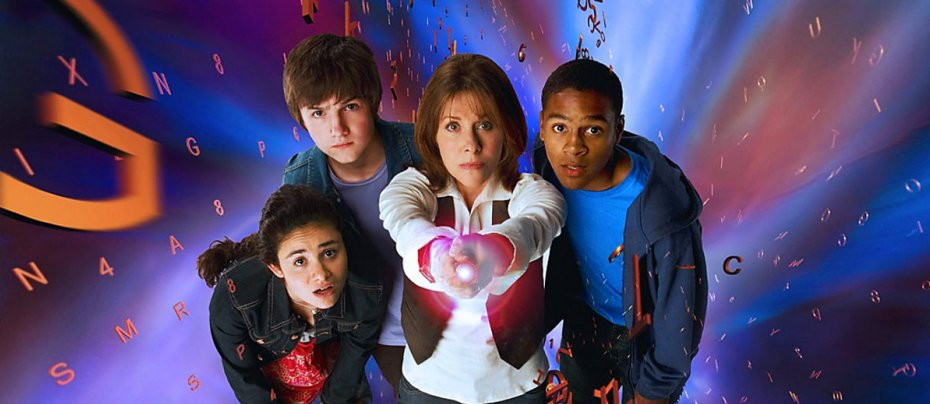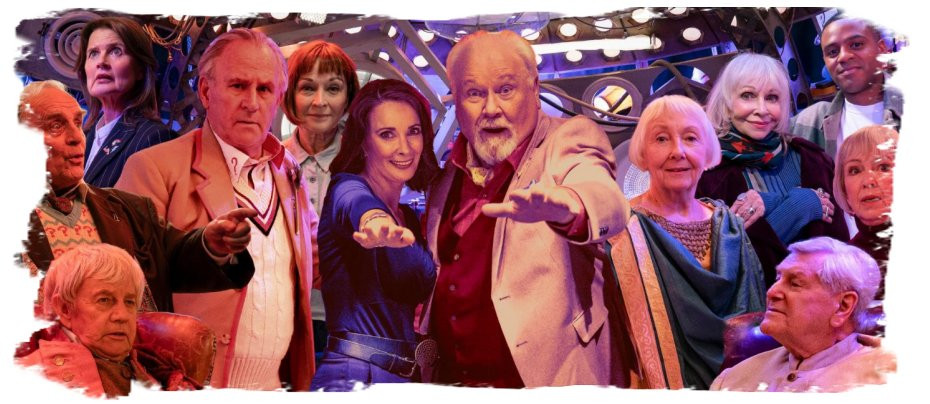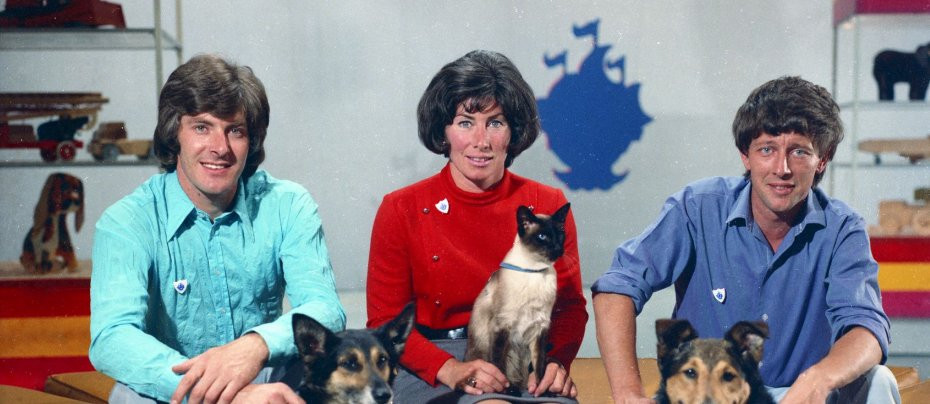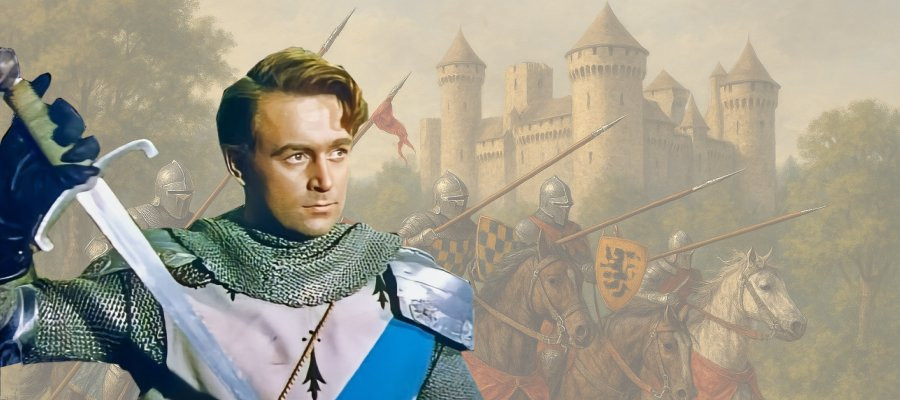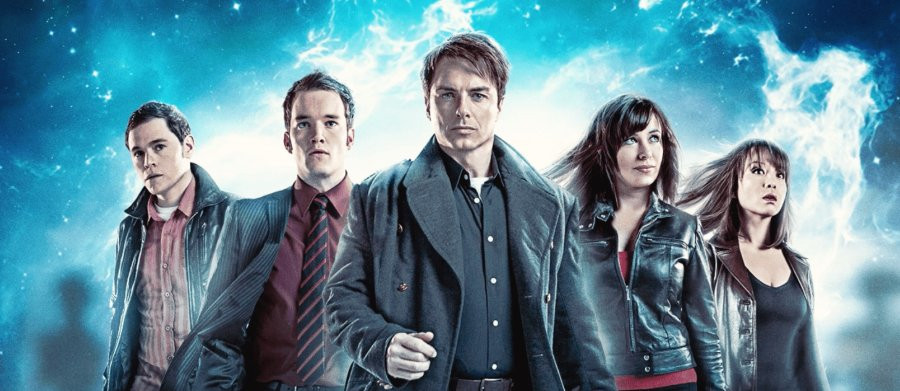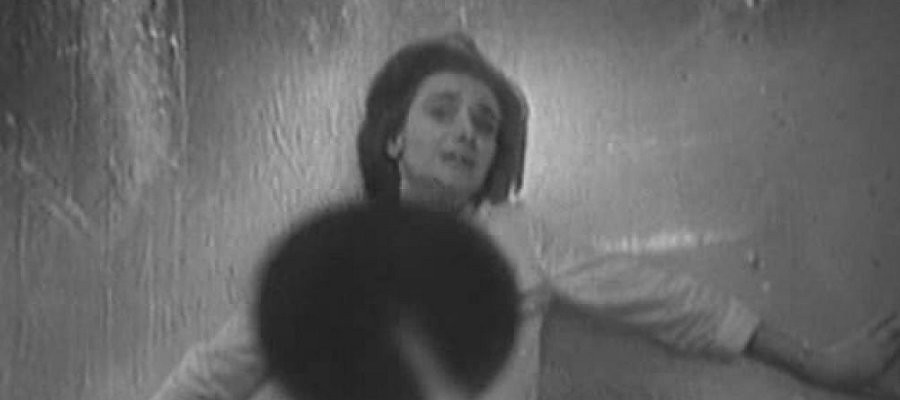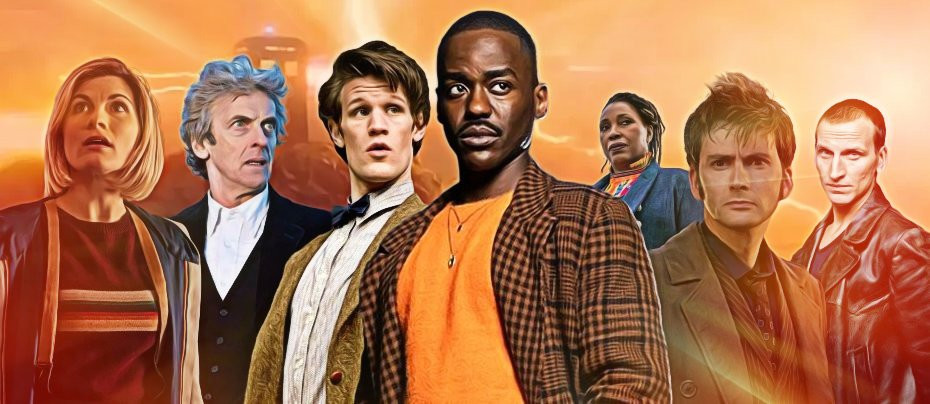The Chase

The Chase, a six-part serial from late in Doctor Who’s second season, is the end of an era and the start of a new one, in more ways than one. On the one hand, it’s the last story to feature William Russell and Jacqueline Hill as Ian Chesterton and Barbara Wright. With their departure, all three of the Doctor’s original companions had left, with only William Hartnell as the Doctor himself left from the original regular cast.
It also sees the series begin its move away from the semi-educational programme it was conceived as towards pure adventure and entertainment. Previously, individual serials had been quite strictly divided into historical stories, with human characters in notable periods of real history, and science fiction adventures, with alien creatures on distant planets. (There were some oddities; the first serial, An Unearthly Child, was unique in its approach; the third serial, Inside the Spaceship, was set entirely within the TARDIS; while the season two opener, Planet of Giants, had a contemporary setting but saw the main characters shrunk to ant-size.)
The Chase, however, blurred these lines considerably. Terry Nation, as with his previous script The Keys of Marinus, gave the heroes multiple adventures within an overall narrative, albeit by keeping them on the run rather than assigning them a quest. However, Marinus was set in different regions of a single planet; The Chase instead sees the TARDIS continually moving from one location to another, through time and space, as the travellers flee the Daleks. Suddenly, the Daleks are turning up in contemporary and historical settings, breaking down the series’ original approach. The following serial, The Time Meddler, would explore the mix of sci-fi and history fully; for now, the programme’s creators were playing with the format to see what worked.
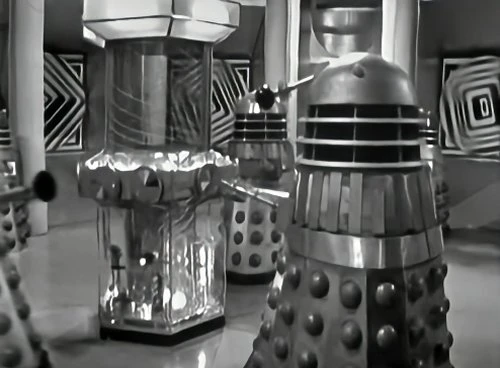
The Chase is the third serial to feature the Daleks and sees them both raised to the Doctor’s archenemies and reduced to a laughable bunch of desperate schemers. On the one hand, the Daleks now have their own time machine (called in the script, though sadly not on screen, the “DARDIS!”) and are hunting the Doctor down following their defeat in The Dalek Invasion of Earth. They have not only evolved to reach the Doctor’s level as time-and-space travellers, but they have singled him out as their number one enemy, which becomes perhaps his defining role as the series progresses, particularly in the 21st century revival.
On the other hand, the Daleks have never been as ineffectual as they are here. Their plans are absurd, and they are feeble in combat, at least until the story calls for a climactic action set piece. The sight of a set of stairs leaves them weak at the knees they wish they had, and one of the Daleks is a comedy thicko character who can barely count. Props to the team for trying new things with their most popular monsters, but if you’re going to wheel them out twice a year to boost ratings, it would make sense to keep them as a credible threat.
In fact, The Chase is perhaps TV Doctor Who at its closest to the big screen Dalek adventures. The first of these, Dr Who and the Daleks, was released in UK cinemas not long after the season completed broadcast. Like that film, The Chase is a frothier, more comedic, more over-the-top take on the ongoing battle between the Doctor and the Daleks, very much written with a “what will distract the kids for another twenty minutes?” mentality. In spite of the Daleks being rather rubbish here, it’s arguably where they achieve their iconic status. As well as being rebuilt with the design that would last them through to the end of the original series (with those nice slats down the “shoulder” area), they finally settle on “Exterminate!” as their menacing catchphrase. They’d talked about exterminating their enemies before, and they experiment with a few alternatives like “Annihilate!” here, but by the time the serial’s done, they’re chanting “Exterminate! Exterminate!” like schoolchildren across sixties Britain.
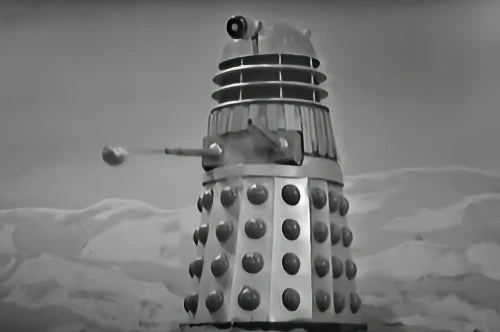
The serial begins with “The Executioners” (which would have been a much more exciting overall name for the story). While Ian, Barbara and Vicki are trying to keep themselves busy aboard the TARDIS in flight (which we actually see for the first time, although it’s not very impressive), the Doctor tinkers with his new Time-Space Visualiser. This absolutely gigantic prop is the universe’s most absurd television set, freshly pinched from The Space Museum as a new DIY project for the Doctor. The Visualiser is able to tune into events in the past with perfect accuracy, playing them back as live, thanks to some absolute nonsense about images imprinted on “light neutrons.”
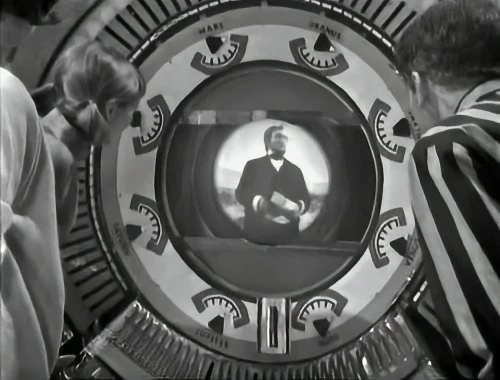
After watching Abe Lincoln deliver the Gettysburg Address and spying on Shakespeare in the court of Elizabeth I, the travellers tune into the Beatles performing “Ticket to Ride.” It had been hoped that the Beatles would make a special appearance on the programme; in the event, a clip from Top of the Pops was used. Ironically, given how much of Doctor Who is missing, this sequence is the only surviving part of that performance, or indeed any from Top of the Pops, since much of TotP was wiped as well.
We don’t spend the whole episode watching people watching TV. Soon, the TARDIS has landed, arriving on a desert planet with two suns. The Doctor, uncharacteristically, decides to sunbathe with Barbara, while Ian and Vicki go off exploring. Barbara is distracted by the sound of the Visualiser, still blaring out from the TARDIS; she goes back inside and sees on the screen the Daleks, receiving orders to pursue the Doctor and co. to the planet Aridius. This is a stroke of luck, not that it does the travellers much good. The Doctor and Barbara try to find Ian and Vicki to warn them that the Daleks are coming and they all need to leave, but the intrepid pair have got themselves trapped in an underground city. Before long, night has fallen, a sandstorm has buried the TARDIS, and the Daleks have arrived, one of their number pushing itself up out of the sand to provide the first cliffhanger.
Episode two, the evocatively titled “The Death of Time,” is spent entirely on Aridius, which we discover was once an ocean world that dried up as it drifted closer to the twin suns. (What was it called before it was arid, I wonder?) The Aridians, fish-like people who have adapted by living underground, help the travellers to begin with. They’re an alright bunch, but understandably (and very apologetically) agree to hand the time travellers over to the Daleks so that they don’t get exterminated themselves. One of their number is played by a young Hywel Bennett, years before his well-known roles in Tinker, Tailor, Soldier, Spy and Shelley. The only other surviving creatures on the planet are the mire beasts, enormous octopus-like monsters who provide an extra threat to the travellers. Naturally, they all escape and make it back to the TARDIS, but the Daleks are in hot pursuit and closing all the time (not that this makes any sense in terms of time travel, but then, what does?)
Episode three is “Flight Through Eternity” (they really are on top form with the episode titles for this story), a silly episode that makes up for lost time by visiting two points in Earth’s timeline. First off, the TARDIS appears on the Empire State Building in 1966 (technically the future when broadcast), narrowly missing a guided tour. One tourist remains behind long enough to see the Ship materialise and meet the crew, the comedy Alabama yokel, Morton Dill. Comedy does not necessarily mean funny, of course. A young actor named Peter Purves (forever best known for his tenure on Blue Peter from 1967-78) plays Dill, and he does his best with an excruciating character. Purves will be back before the serial is over, but fortunately, Dill will not. The TARDIS next arrives on the fabled Mary Celeste. It turns out the ship was abandoned because the crew were so terrified of the Daleks that they all threw themselves overboard. So now you know.
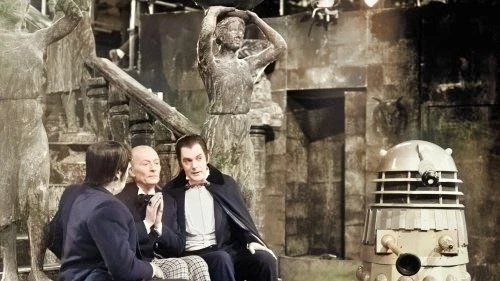
The fourth instalment, “Journey into Terror,” (seriously, they’re on fire with these titles) is by far the daftest. The Doctor and co. arrive in what appears to be a haunted house, complete with Count Dracula, Frankenstein’s Monster and a ghostly Grey Lady, who makes an awful racket. The Doctor comes to the baffling conclusion that they have somehow entered a nightmare realm generated by the human collective subconscious. In fairness, that does sound like a great idea for an adventure, and the TARDIS will later arrive in a realm of games and a realm of stories, so it’s not entirely unbelievable, but where he gets the idea is anyone’s guess. It’s actually an abandoned funfair attraction built for the 1996 Festival of Ghana, and the monsters are all robots. When the Daleks arrive, they are well and truly trounced by these hopeless robots, with the TARDIS travellers able to escape in the confusion.
But oh no, they’ve left Vicki behind! While the Doctor berates himself for his carelessness, Vicki sneaks onboard the Dalek timeship and hides away, keeping an eye on what the Daleks are up to. Those spooky robots have seemingly given them an idea, and they use a handy bit of tech called a reproducer to create a robotic replica of the Doctor, to “infiltrate and kill.” The robot is allegedly “indistinguishable from the original,” which suggests something very limited about the Daleks’ ability to tell humanoids apart. (They also think Vicki is Susan, which gives the game away when the robotic infiltrator uses the wrong name.) The robot Doctor is easily the most ridiculous part of this entire serial. The idea is sound enough; it’s the execution that’s so hopeless.
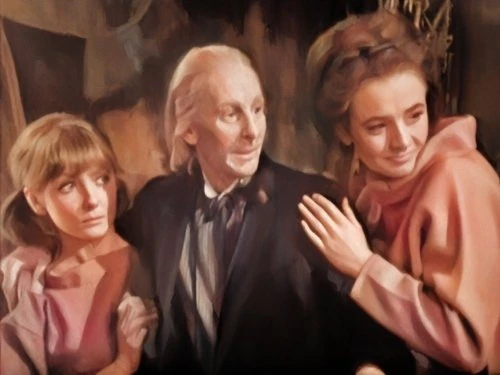
Throughout part five, “The Death of Doctor Who,” Robot Dr. Who dupes the travellers, which would work if he consistently looked like the Doctor. Except that for about two thirds of the shots he’s played by Edmund Warwick, who had stood in for Hartnell before when he was injured. That’s fine for a quick long-distance shot, but there are plenty of lingering scenes where it’s very plain to see this is a completely different gent being dubbed over by Hartnell’s voice. The infuriating thing is that there’s no reason for it half the time. When the real Doctor faces his double then you can see why they needed another actor, but why use Warwick when he’s the only one screen? Sometimes they use Hartnell to play the robot, so it’s not even to consistently show the audience which one is the robot. Maddening.
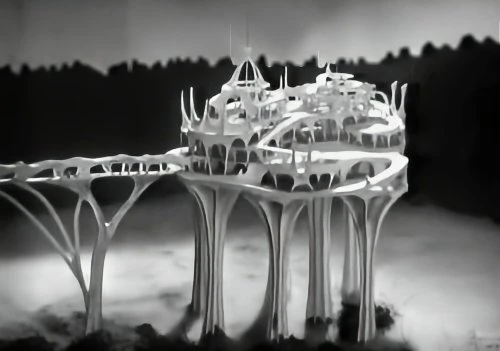
The bulk of the episodes five and six takes place on the planet Mechanus, a lush jungle world that is home to the latest attempt to create the “new Daleks.” The Mechanoids (or Mechanoids, if you prefer. Or Mechons, if you’re a Dalek) are huge, unwieldy, roughly spherical robots with a couple of flappy arm-things that slide out, and a rather nasty flamethrower attachment. The Mechanoids are service robots created by Earth forces, sent out into the galaxy to prepare colonisation sites. To this end, they’ve built a fabulous, mile-high city (a nice bit of modelwork, that), but when the Earth got caught up in some interplanetary wars, they were abandoned. They’ve been on the planet for years, waiting for someone to turn up with the right codes to give them new orders. Mechanus is also home to enormous, deadly mushroom-creatures that Ian calls “fungoids,” although the script, in another naming triumph, calls them the Gubbage Cones.
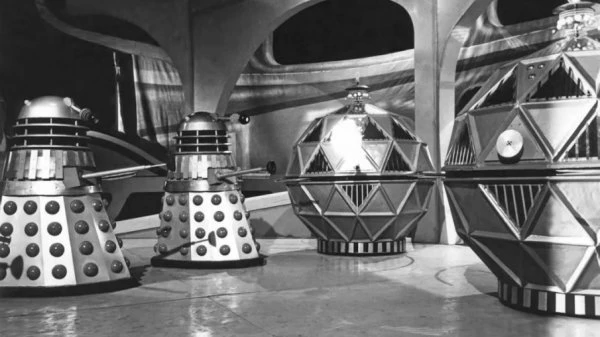
The sixth and final episode, “Planet of Decision,” is suddenly and unexpectedly really rather good. The Mechanoids take the Doctor and his companions prisoner, having no orders telling them what to do with unidentified humans, whereupon they meet another prisoner. It’s Peter Purves again, this time playing Steven Taylor, an astronaut whose been kept captive by the Mechanoids for two years since he crashed on the planet. His only companion in all that time has been a stuffed panda named Hi-Fi, so he’s a touch overexcited when he suddenly has some actual people to talk to. Unlike Morton Dill, Steven is an immediate hit, a sort of macho hero type who’ll provide a handy mix of brute strength and charisma in the coming episodes.
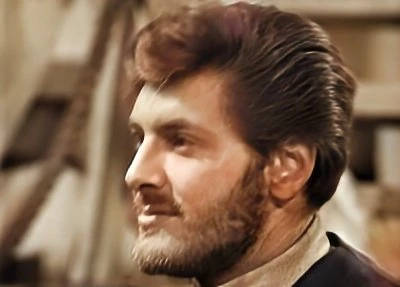
The Daleks, in their attempt to capture and kill the Doctor, end up in battle with the Mechanoids, and it’s genuinely quite impressive. The Mechanoid props might be impractical when working around people, but for robot-on-robot (well, cyborg) action, with flamethrowers roaring, and recorded on film rather than tape, they and the Daleks actually look like a fighting force. Still, the Mechanoids were never going to catch on like the Daleks did; for one thing, no one can understand a word they say, and for another, they were a nightmare to film with. They did, however, appear extensively in comics, including TV Century 21and the 1965 annual The Dalek World. The rotund robots finally appeared on screen again in 2020, in three episodes of the short-lived YouTube animated series Daleks!
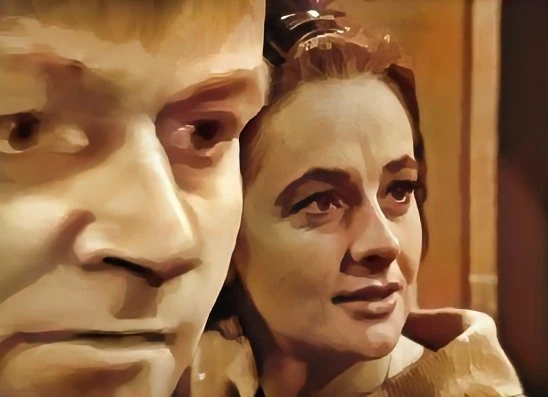
Taking the opportunity to escape, the Doctor, Ian, Barbara and Vicki find the Dalek time machine in the jungle. (Steven also escapes, not that the rest of them seem too concerned for his welfare.) Ian and Barbara realise that, with a steerable time vessel, they might finally be able to get to their own time and place (it apparently didn’t occur to them to take a flight from New York when they arrived in 1966, although they were in a bit of a rush).
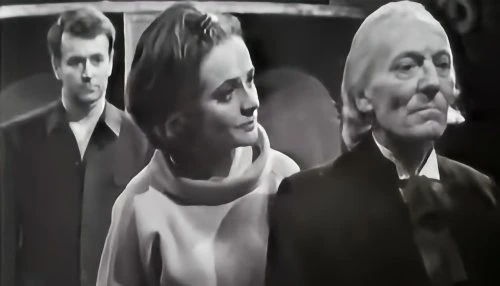
The Doctor furiously refuses to let them go through with it, ostensibly because it’s too dangerous, but clearly because he doesn’t want to say goodbye to his friends. He reluctantly agrees to programme the Dalek ship to take them back home, and they arrive in “London, 1965!” (A cry of glee which became a meme when young fans discovered The Chase in their Doctor Who marathon on Twitch in 2018.) We are treated to a wonderful sequence of images and escapades of Ian and Barbara running around London, only two years after they left… which pans out to show that the Doctor and Vicki are watching them on the Space-Time Visualiser.
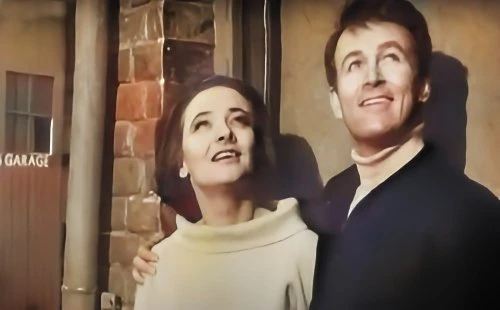
It's a gorgeous way to end the serial and makes up for a lot of the nonsense over the previous five episodes. With Jacqueline Hill and William Russell now gone, Doctor Who had lost its original two heroes and the show was now firmly about the Doctor. Hill would never play Barbara again but would have a guest appearance as a new character in the 1980 Tom Baker serial Meglos. She died in 1993, aged only 63. Russell, on the other hand, returned to the role of Ian numerous times, initially only for linking material on the VHS release of The Crusade, but later for many audio plays produced by Big Finish. He had a cameo role in the 50th anniversary docudrama An Adventure in Space and Time, returning to play Ian once more on screen in the Doctor Who special The Power of the Doctor, in a brief cameo among a number of former companions. He died two years later in 2024, at the remarkable age of 99.
Review – Daniel Tessier


